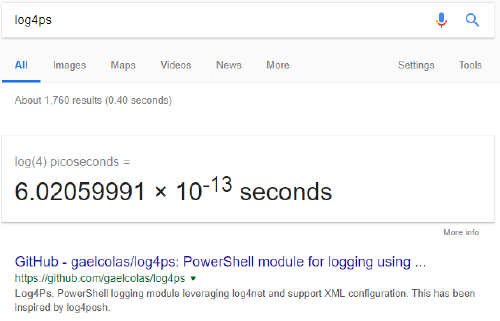S-1-1-0 – Update
According to the company, this is not a security issue. I reserve – and
exercise – my right to disagree, but I’m not a security researcher.
They say that:
-
The global write permissions on the firmware files (they are
firmware files) is
- necessary to enable successful updates, and
- not a problem because the PC software does not interpret them
when feeding them to the reader, and the reader will reject
manipulated files due to invalid signatures.
-
The registry permissions are necessary for interoperability between
components on the same system.
Finally, they say their software and devices are getting tested not
only by them, but also by the IT security people of the companies
using the things, and if no one complains, everything must be fine.
Very well then; if they won’t fix their bugs, I can only do work
around them in my own environment.
S-1-1-0
From the installation log of the driver for a REINER SCT smart card reader:
Executing Process <C:\Program Files (x86)\REINER SCT\cyberJack\subinacl.exe> with </subdirectories "C:\ProgramData\REINER SCT\*" /grant="S-1-1-0"=F>
Um. Come again? S-1-1-0 is Everyone.
C:\ProgramData\REINER SCT\cyberJack Base Components>icacls ctf_bdr.rsct
ctf_bdr.rsct Everyone:(F)
NT AUTHORITY\SYSTEM:(I)(F)
BUILTIN\Administrators:(I)(F)
BUILTIN\Users:(I)(RX)
C:\ProgramData\REINER SCT\cyberJack Base Components>icacls .
. Everyone:(OI)(IO)(F)
Everyone:(CI)(F)
NT AUTHORITY\SYSTEM:(I)(OI)(CI)(F)
BUILTIN\Administrators:(I)(OI)(CI)(F)
CREATOR OWNER:(I)(OI)(CI)(IO)(F)
BUILTIN\Users:(I)(OI)(CI)(RX)
BUILTIN\Users:(I)(CI)(WD,AD,WEA,WA)
The files are “transfer files” according to the (rather pointless)
file type registration. They look encrypted. I suspect they are some
kind of firmware.
Why would anyone in their right mind set a directory full of firmware
for a smart card reader to be world writable?
The next line in the log file is this:
Executing Process <C:\Program Files (x86)\REINER SCT\cyberJack\subinacl.exe> with </keyreg "HKEY_LOCAL_MACHINE\SOFTWARE\Microsoft\Cryptography\Calais\Readers" /grant="S-1-5-19"=F>
NT AUTHORITY\LOCAL SERVICE. Probably also not a good idea; I think
this is left from before there were virtual service
accounts.
Time to ask the company.
Komposita
- Weichenlaufkettensperrmelder
Hidden knowledge
How to remove a systemwide installation of Fusion 360
"Fusion 360 Client Downloader.exe" --globalinstall -p uninstall
QA, setzen, sechs.
Ach du lieber Deutschlandfunk.
Fall
1:
»Jetzt muss Sessions gehen. Nachfolger wird aber nicht sein
Stellvertreter, sondern Trumps Stabschef Matthew Whitaker.« Äh, nein,
Whitaker ist/war nicht Trumps Stabschef, sondern
Sessions’.
Fall
2:
»Was man auch erzählen muss, weil es vermutlich bei der Geschichte
eine Rolle spielt: die Bahira-Mitarbeiterin, die das Erlebnis hatte,
ist nicht irgendwer. Das ist Pinar Cetin, die Ehefrau, des früheren
Moscheevorsitzenden Ender Cetin, der im Dezember 2016 überraschend aus
diesem Amt entfernt wurde. Auch sie selbst war in der Moschee und bei
Ditib schon in wichtigen Ämtern bekleidet.« Wieso, sind Frauen in
Moscheen und bei Ditib normalerweise unbekleidet?
Internationales Format
https://www.deutschlandfunk.de/y.807.de.html?dram:article_id=431030
Und manchmal erscheint ihr neben ihrer Tochter auch noch ihre große
Schwester Adelheid, oder wie?
A matter of interpretation
You know, Google, one of these things is far more likely to be what I
was looking for than the other.
Nice try, though.

Yes. Another one.
Let’s have another (little) Python packaging rant. It’s been a while.
I just made a mistake. I thought I had told my deployment software to
remove a Python installation, when I had actually only removed one
third-party package that I had repackaged as MSI. Then I deleted the
whole installation directory (which I believed had only leftover
bits).
Oops. How do I clean this up?
Well, let’s just install the whole thing again, from the original
– shudder – burn bundle.
Won’t work. Takes but a second, then claims success. No wonder, all
the metadata is still there; for the bundle it looks like all its
little constituent parts are already installed.
So we uninstall the bundle? Error 1603.
So we repair it? Gets up to pip (having done nothing to the actual
file system), then fails, “no installation detected”. You don’t say.
Fix? Download the whole set of MSIs, install them in an order that
works, uninstall them in reverse order, then install the bundle and
uninstall it again.
Ceterum censeo: This mess would have been avoided had I thought before
typing. OTOH, it also would have been avoided by using MSI as the
distribution package format because then a repair installation would
have actually worked.
Weltschmerz
Currently converting a Django project that was using ZPT via Chameleon
to Django’s own template language.
No, I don’t think this is a good idea.
Unfortunately, Django’s developers make it increasingly difficult to
generate XHTML, and recent versions have essentially made it
impossible without rewriting a good bit of the framework itself.
For some reason, the Django project has decided to embark upon a
crusade against XHTML, and my poor little ZPTs are its victims.
Honestly now. Which is better?
This:
<?xml version="1.0" encoding="utf-8"?>
<!DOCTYPE html PUBLIC "-//W3C//DTD XHTML 1.0 Strict//EN"
"http://www.w3.org/TR/xhtml1/DTD/xhtml1-strict.dtd">
<html xmlns="http://www.w3.org/1999/xhtml"
xmlns:tal="http://xml.zope.org/namespaces/tal"
xmlns:metal="http://xml.zope.org/namespaces/metal">
...
<body>
<h1 tal:content="section"/>
<p tal:repeat="item items" tal:content="item.label"/>
...
Or this:
<!DOCTYPE html>
<html>
...
<body>
<h1>{{ section }}</h1>
{% for item in items %}
<p>{{i item.label }}</p>
{% endfor %}
...
When done adequately, ZPT are well-formed XML. When done correctly,
they are valid XHTML (the templates themselves, not just [but also!]
their output).
Django templates, on the other hand, are line noise when done
completely wrong, and still line noise when done “right”.
I'll just keep talking here ...
Imagine you work in a support call center, and right now have to try
and make yourself understood to callers over the earsplitting speakers
above you –
Bong! Bong! Attention! Attention! An incident has been
reported within the building. Please wait for further
announcements.
Over, and over, and over again, all the time.
If this is not difficult to imagine, because you are living it right
now, then you work at Bloomberg.
